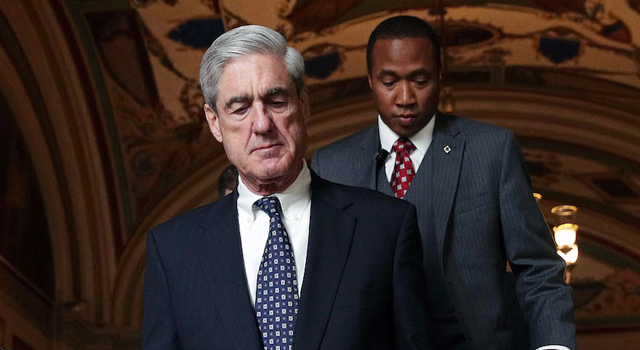By Cindy Mindell ~
NEW HAVEN – Mira Rembiszewska was five when her parents asked neighbors in their Polish town to take in the little girl. Mira’s parents survived Auschwitz and were reunited with their daughter after the war, making their way to New York City and Americanizing their name to Reym.
In 1983, Mira Reym Binford came to New Haven to take a position at Quinnipiac College (now Quinnipiac University), teaching Holocaust studies and film studies. A prolific documentary filmmaker, she finally told her own story on film in 1994, in “Diamonds in the Snow.” The work relates the experiences of Binford and fellow Bedzin natives Ada Raviv and Shulamit Levin, who were among the mere dozen Jewish children of the town who survived the Holocaust. The film also includes several paintings and drawings of Binford’s mother, Dora Reym, now 97, who relocated to Hamden in 2008.
Through interviews and rare archival film and photos, the critically acclaimed, international award-winning “Diamonds in the Snow” not only documents a tragic historical period but also examines the complexity of human nature, undermining stereotypes about the behavior of Jews, Poles, and even some Germans during the era.
Over the last academic year, Dora and Mira have been part of the Adopt-A-Survivor project at MAKOM of Greater New Haven, an educational program for Jewish teens. Through extensive interviews, the teens absorb the life stories of Holocaust survivors living in the community, pledging to retell the stories at a convention to be held in Washington, D.C. in 2045, the 100th anniversary of the liberation of Auschwitz.
A screening of “Diamonds in the Snow” will be preceded by the opening of “A Survivor Remembers…and Imagines,” a showcase of Dora Reym’s works, hosted by the JCC of Greater New Haven on Wednesday, June 6 from 5-7 p.m (on display through July 2).
The filmmaker spoke with the Ledger about the stories behind her film.
Q: When and why did you decide to make Diamonds in the Snow?
A: From the time I became interested in making documentary films, in my early 20s, I wanted to make a film about survivors. But in a sense I spent much of my adult life not making the film. Instead I was drawn to film far away cultures, working for years in India and Bangladesh, where the subject of the Holocaust was very distant. I kept alive the idea of a film on survivors of the Holocaust: I kept a file full of notes and clippings, recorded interviews, and would tell people I met in my travels about my personal connection to that tragic history – but I kept putting off making the film, until eventually, I couldn’t put it off any longer.
Perhaps turning 50 was galvanizing. Perhaps it was the experience of teaching college students that taught me how remote the World War II era was to most of them, how difficult it was for them to “relate” to it. Perhaps it was that some of the survivors I had wanted to include in my film were now gone. Survivors were dying, memories fading. And there was the rise of Holocaust denial. One day, as I was about to enter a conference on the Holocaust in Boston, I encountered demonstrators with placards proclaiming that “no Jews were gassed at Auschwitz,” and I finally felt I had run out of excuses. It was time to confront my most challenging film subject.
The experience of children in the Holocaust was a subject that, with only a few exceptions, had been neglected in the hundreds of documentary films made on the Holocaust. Most people encounter the Holocaust by reading the story of a child – Anne Frank – so it’s ironic that until recently, very little attention was paid to the experiences of survivors who were children during the Holocaust, especially in documentary films. Since “Diamonds in the Snow” came out, other films about hidden children have been made, and of course now many of the survivors speaking to schoolchildren and other audiences are former child survivors.
Q: How did you locate Ada Raviv and Shulamit Levin, the other two women who tell their stories in the film?
A: I spent a great deal of time interviewing people – about 150 in all – in this country, Europe, Israel, Australia. Before email, this had to be done by traveling, by letter, or telephone. I was searching for information, photos, documents, and for other child survivors from my hometown. At first no one thought I’d find more than a few, but one person led to another and another. Of the 12 “hidden children” I located, most of them in Israel, I selected Ada and Shulamit to accompany me on the journey into our personal and collective history.
I chose them because of their ability to access and articulate their feelings and memories even in front of a camera, and because their wartime and post-war stories complemented my own, giving the film a representative range of children’s hiding experiences and aftereffects.
Q: How old were you when you became a hidden child?
A: I was five when I went “over the wall.” For the first few months I had to hide only my identity – my hair and eyebrows were bleached blonde, I had false ID papers and a new name, I wore a cross, and was presented as the child of relatives. But then bleach became unavailable, and when the black roots started showing, my hair was shaved off and I wore a funny little cap. When that became too risky, I remained hidden in the apartment – and sometimes inside a hiding place in the wall; that lasted for almost 14 months.
Q: How were you reunited with your parents, and how old were you then?
A: I was almost 7 when my mother escaped from a “death march” from Auschwitz and came to the address she had memorized where she hoped to find me still hidden. She hid with us until the Soviet Army arrived at the end of January 1945 – and we were finally free. My father was liberated by the American Army but was too ill to travel. We were reunited with him half a year later, and gradually discovered that of my parents’ large families, we were the only ones left alive.
Q: Did you or your parents ever see or speak with the Dyrda family after the war?
A: We kept in touch through letters and sent them packages. Unfortunately, the four who were involved all died young before I could see them again, but they were honored by Yad Vashem as Righteous Gentiles. In the film, I talk with a surviving son of the family, who recalls coming home on leave from the German Army and meeting me. His mother, the woman who rescued me, was an ethnic German and by registering the family as German when the Nazis occupied Poland, she secured better rations for her family. But as a result, three of her sons were forced to serve in the Wehrmacht – while she sheltered a Jewish child, a “crime” punishable by death.
“A Survivor Remembers…and Imagines:” Wednesday, June 6, 7 p.m., JCC of Greater New Haven, 360 Amity Road, Woodbridge, followed at 7 p.m. by a screening of “Diamonds in the Snow” and Q&A with the filmmaker | Info: Anat Weiner, (203) 387-2424.







 Southern New England Jewish Ledger
Southern New England Jewish Ledger















